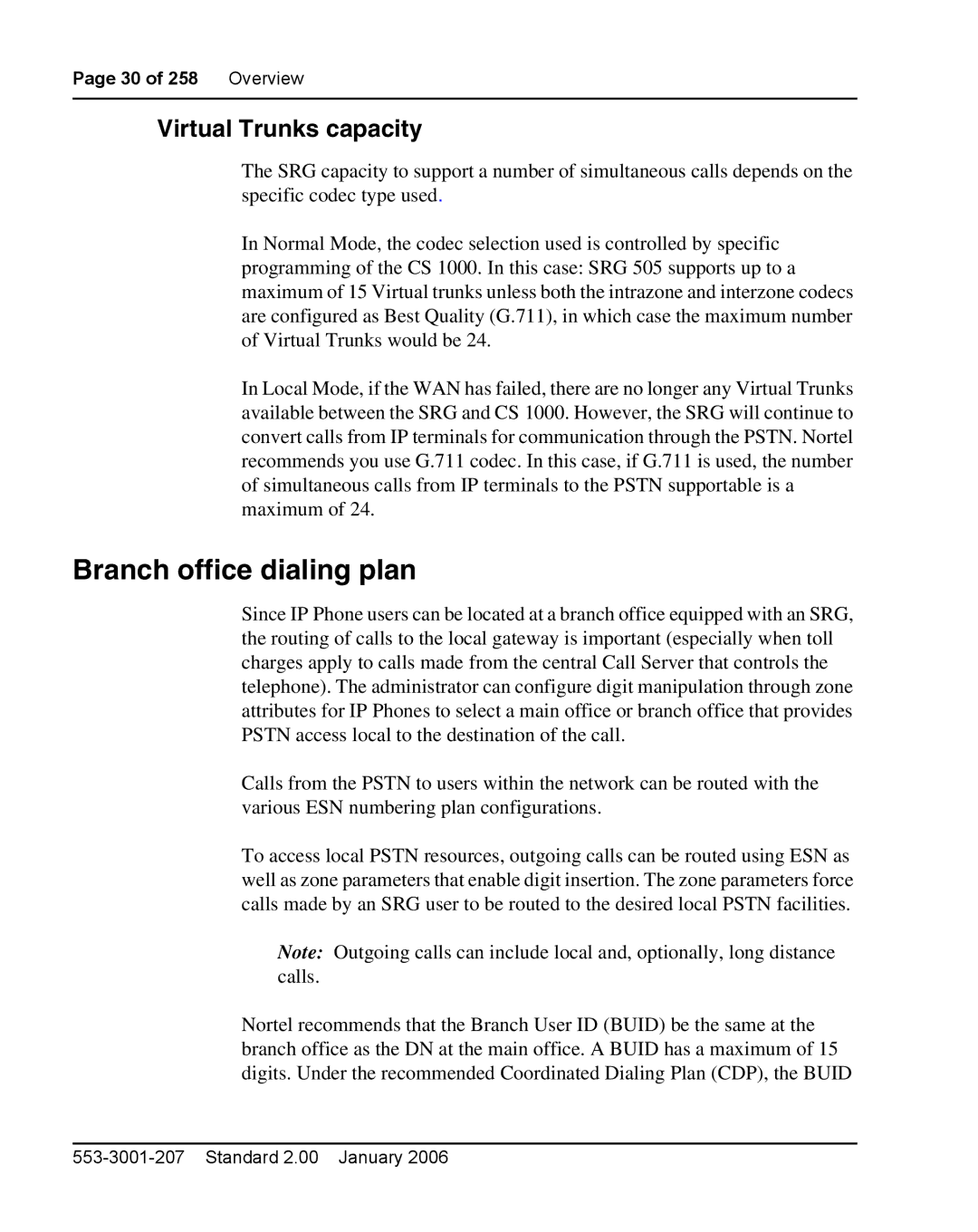
Page 30 of 258 Overview
Virtual Trunks capacity
The SRG capacity to support a number of simultaneous calls depends on the specific codec type used.
In Normal Mode, the codec selection used is controlled by specific programming of the CS 1000. In this case: SRG 505 supports up to a maximum of 15 Virtual trunks unless both the intrazone and interzone codecs are configured as Best Quality (G.711), in which case the maximum number of Virtual Trunks would be 24.
In Local Mode, if the WAN has failed, there are no longer any Virtual Trunks available between the SRG and CS 1000. However, the SRG will continue to convert calls from IP terminals for communication through the PSTN. Nortel recommends you use G.711 codec. In this case, if G.711 is used, the number of simultaneous calls from IP terminals to the PSTN supportable is a maximum of 24.
Branch office dialing plan
Since IP Phone users can be located at a branch office equipped with an SRG, the routing of calls to the local gateway is important (especially when toll charges apply to calls made from the central Call Server that controls the telephone). The administrator can configure digit manipulation through zone attributes for IP Phones to select a main office or branch office that provides PSTN access local to the destination of the call.
Calls from the PSTN to users within the network can be routed with the various ESN numbering plan configurations.
To access local PSTN resources, outgoing calls can be routed using ESN as well as zone parameters that enable digit insertion. The zone parameters force calls made by an SRG user to be routed to the desired local PSTN facilities.
Note: Outgoing calls can include local and, optionally, long distance calls.
Nortel recommends that the Branch User ID (BUID) be the same at the branch office as the DN at the main office. A BUID has a maximum of 15 digits. Under the recommended Coordinated Dialing Plan (CDP), the BUID
